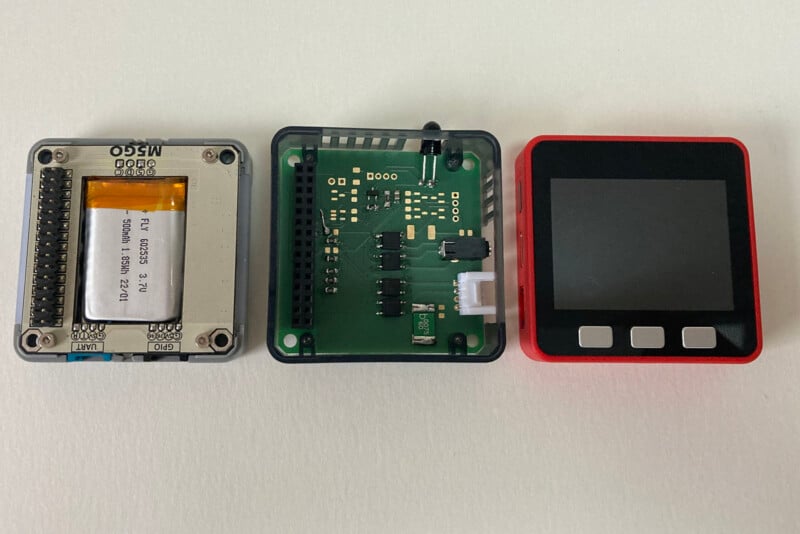DIY Filmolino SlideScanner is Open Source and Automates Slide Scanning

Slide scanning can be a tedious endeavor with lots of manual work, but Filmolino aims to change that. The Filmolino SlideScanner is an open-source scanner that uses relatively simple components and automates the process, resulting in faster, easier scanning.
Filmolino is a project run by Roger Ludwig and Francesco Bagnato. They previously created multiple prototypes of a multiformat film scanner, which also relied on open source software. They designed their newest project, the Filmoline SlideScanner, specifically for slide film.
The SlideScanner uses a modified slide projector as the light source and method of moving slides, while a digital camera digitizes the slides. The Filmolino prototype uses a Pentax K-70 camera with a Tamron SP 90mm f/2.8 Macro VC lens. The creators used pixel shift “to eliminate the disadvantages of the Bayer matrix,” they explained.
Photographers control the components above using the control unit, which consists of an M5Stack Fire kit, part of the M5Stack development kit series. The M5Stack Fire kit features 16M Flash and 8M PSRAM. It consists of three parts. The top part includes “all kinds of processors, chips, sockets, 2.4G antenna, ESP32, power management IC, an LCD screen and some other interface components,” says the M5Stack website. The middle part includes the M5GO base with a 3.7V/500mAh Lithium battery, M-BUS socket, LED bar, and three more GROVE Ports. Finally, the bottom component is a charge table, which users can connect to the M5GO base via POGO pins.
The ESP32 development board allows users to control the scanning process via WiFi. They can also use a cable release or an infrared remote control to move to the next slide.
The software for the SlideScanner is open source, and users can find the project files and KiCAD design files on GitHub. The software provides various settings, including the ability to adjust the time between slides, according to Hackaday.
The entire project looks relatively straightforward to put together. It’s likely much easier than crafting a LEGO slide scanner. However, users will likely need to make modifications specific to their camera. That said, unless someone needs to scan slides on a regular basis, it seems a bit unnecessary. But for those wanting a fun project, this could fit the bill.
Image credits: Filmolino